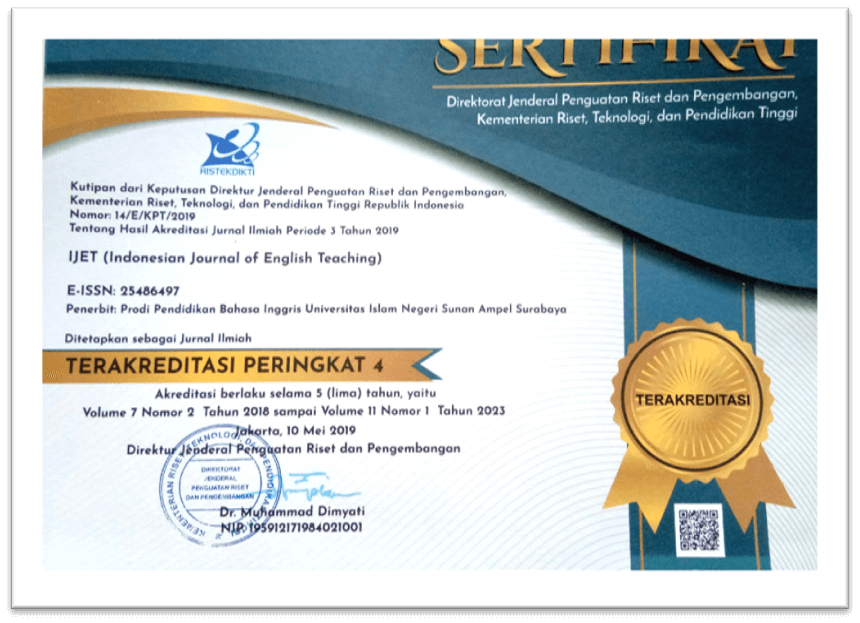Error Analysis of Students’ Comment Writing in Online Learning at FLSP Class
DOI:
https://doi.org/10.15642/ijet2.2022.11.2.118-137Keywords:
Error, Error Analysis, Grammatical Error, Student Writing.Abstract
Grammatical errors are one of the issues that students face during the writing process. The main goal of this research was to discover the most common grammatical errors committed by FLSP students in comment writing at the University of Muhammadiyah Malang in 2021. The goal of this study was to distinguish, categorize, and display the percentage of students that committed each sort of error. The research approach employed was qualitative and descriptive methods. This study included 30 first semester students as participants in the Communication (A), Accounting (B), Elementary School Teachers (D), Psychology (J), Engineering at FLSP class of UMM. Documentation of student comment writing debate was utilized as the tool. The Surface Strategy Taxonomy, developed by Dulay et al., is used to assess all grammatical mistakes found in student comments in Canvas (LMS). According to the findings, there are a total of 230 errors. The most common error was omission (120 errors / 52.18 percent), followed by misformation (70 errors / 30.43 percent), addition (30 errors / 13.14 percent), and misordering (10 errors / 4.38 percent). Based on these findings, it can be inferred that students continue to struggle with understanding grammatical structures throughout the writing process.
Downloads
References
Abushihab, I. (2014). An Analysis of Grammatical Errors in Writing Made by Turkish Learnners of English as a Foreign Language. International Journal of Linguistics, 6.
Arikunto, S. (1998). Prosedur Penelitian Suatu Pendekatan Praktik. . Jakarta: Rineka Cipta.
Brown, D. (2007). Principles of Language Learning and Teaching. New York: Longman.
Dulay, H., M, B., & Krashern, s. (1982). Language two. New York: Oxford University.
Ellis, R., & Barkhuizen, G. (2005). Anaylysing Learner Language. China: Oxford University Press.
Erdogan. (2005). Contribution of error analysis to foreign language teaching. Mersin University Journal of the Faculty of Education, 1 (2), 261-270.
Hammersley, M. (2013). What is Qualitative Research? Research Methods. London: Continuum/Bloomsbury.
Larsen-Freeman, D., & Long, M. (2014). An introduction to second langauge acquisition research. New York; Routledge.
Linse, C. T. (2005). Practical English Language Teaching: Young Learners. New York: Mc-Graw-Hill.
Mourtaga, K. (2004). Investigating Writing Problems among Palestinian students: Studying English as a Foreign Language.
Nunan, D. (. (2003). Practical English Language Teaching. . New York: McGraw-Hill.
Polkinghorne, D.E. (2005). Language and meaning: Data collection in qualitative research. Journal of Counseling Psychology, 52 (2), 137-145.
Richard, J. C. (2002). Methodology in Language Teaching; An Anthology of current practice: . Cambridge University Press.
Treiman, R., & Kessler, B. (2004). The case of case; Children's knowledge and use of upper-and lowercase letters. Applied Psycholinguistics.
Widiatmoko, & Irwan. (2011). Super Speed Reading. Jakarta: Gramedia Utama.











